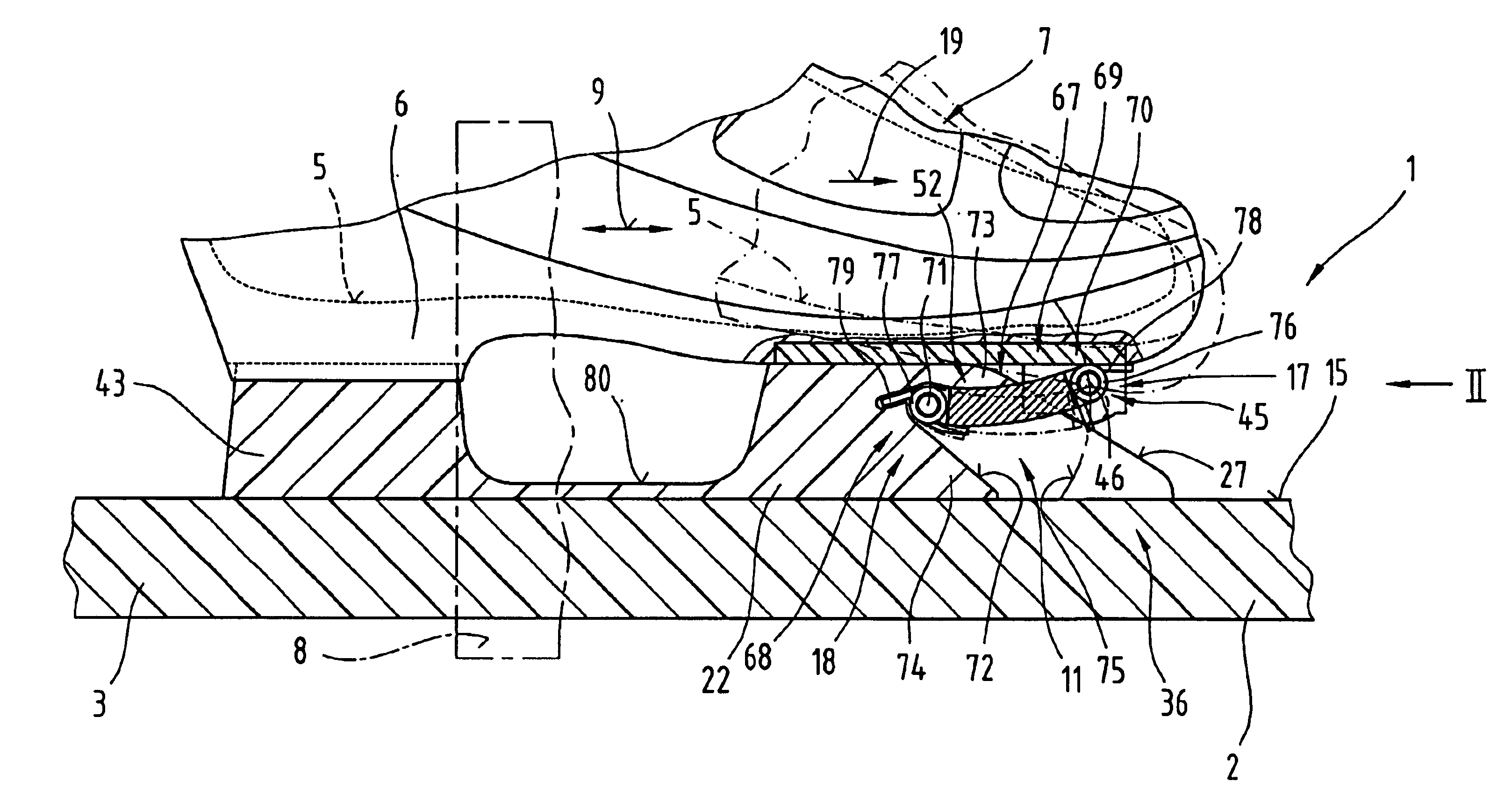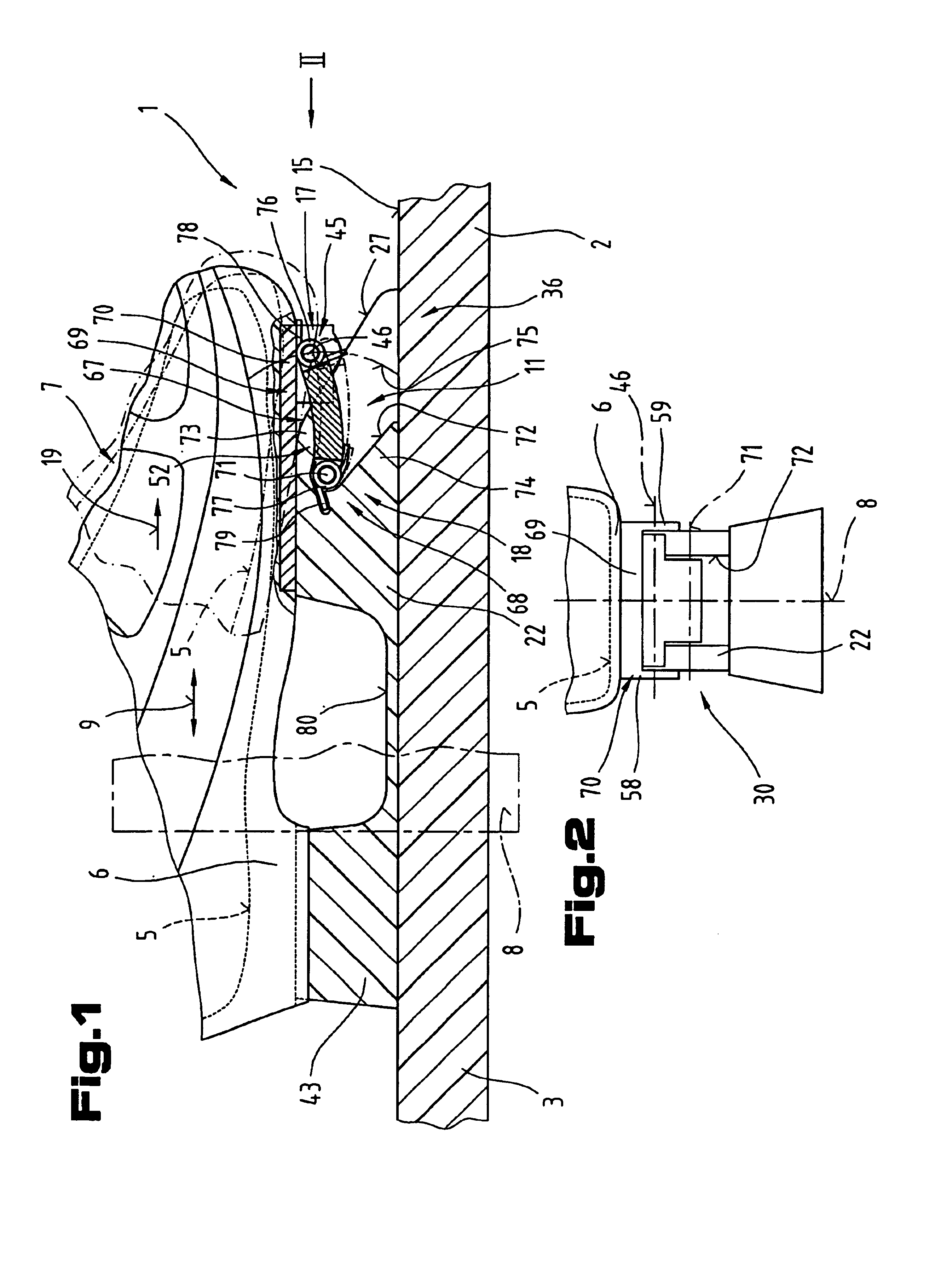Flexible connection between sports device and shoe
a flexible connection technology for sports devices and shoes, applied in the direction of sports equipment, skates, apparel, etc., can solve the problems of parts used, difficult to switch the articulated binding, and easy impairment of correct operation, so as to enhance the performance of users
- Summary
- Abstract
- Description
- Claims
- Application Information
AI Technical Summary
Benefits of technology
Problems solved by technology
Method used
Image
Examples
Embodiment Construction
FIGS. 1 and 2 illustrate one embodiment of a binding system 1 as proposed by the invention, between a sports device 2 in the form of a sliding or rolling member 3, such as a ski 4 or a roller-skate for example, and a tread surface 5 for a user's foot. The tread surface 5 for the user's foot is preferably a shoe sole 6 of a sport shoe 7.
Alternatively, the tread surface 5 for the user's foot may also be a separate, contoured, largely non-deformable bearing element, designed to support or releasably receive the sport shoe 7.
The binding system I can be used with a whole variety of sports devices 2. In particular, the binding system I is suitable for joining appropriate sport shoes 7 to skis for cross-country skiing or touring sports. Similarly, the binding system 1 may be used with ice skating boots and / or with single or multi-track roller-skates. This being the case, the term sports device 2 should be read as meaning a skating blade or single- or multi-track rollers or a retaining fram...
PUM
 Login to View More
Login to View More Abstract
Description
Claims
Application Information
 Login to View More
Login to View More - R&D
- Intellectual Property
- Life Sciences
- Materials
- Tech Scout
- Unparalleled Data Quality
- Higher Quality Content
- 60% Fewer Hallucinations
Browse by: Latest US Patents, China's latest patents, Technical Efficacy Thesaurus, Application Domain, Technology Topic, Popular Technical Reports.
© 2025 PatSnap. All rights reserved.Legal|Privacy policy|Modern Slavery Act Transparency Statement|Sitemap|About US| Contact US: help@patsnap.com


